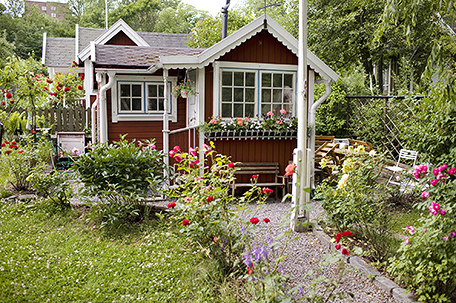
BPT
While newly constructed homes are bigger than ever, most Americans still live in modestly sized or even small houses – and many of these owners are choosing to remodel rather than move into a bigger home.
More than half of all American houses were built before 1980, according to the National Association of Home Builders. At that time, the average new home size was slightly more than 1,700 square feet, U.S. Census Bureau data shows. Meanwhile, interest in remodeling is at an all-time high, according to Metrostudy.
Homeowners looking to renovate their average-sized homes in order to get more living space don’t have to build costly additions. Many modern remodeling tactics, tricks and tools are made to work well in smaller homes. Here are ways to get the most out of your home renovation:
Space-saving plumbing options
Plumbing can be problematic in any renovation, but adding plumbing in certain smaller-house locations can be especially challenging. Traditional plumbing may require you to open walls and floors to connect to existing drainage lines, or break through concrete to add toilets, showers and sinks when finishing a basement.
Above-floor plumbing can solve a number of small-space challenges. For example, you may decide to add a powder room in the unused space beneath a stairway. However, if the space is very small, a standard toilet with water tank and traditionally plumbed sink might not fit. In such a situation, a compact, one-piece macerating toilet like the Sanicompact from Saniflo installs quickly, easily and conveniently in tight spots.
Traditional plumbing can also be a challenge in renovations where you’re adding plumbing below a main level, such as installing a bathroom with a shower or even a second kitchen in a basement setting. In southern states, where most homes are built on slabs rather than with basements, adding any kind of traditional plumbing would require you to break open the concrete in order to add pipes – an expensive and risky undertaking.
However, a Sanistar one-piece, wall-mounted toilet with built-in macerator allows you to add a basement bathroom without cutting concrete. For adding sinks or showers, gray water pumps such as the Saniswift can be as compact as a small wastebasket, and can carry water away from new bathrooms or kitchens where no traditional plumbing exists.
Right-sizing utilities
If you’re adding a bathroom or kitchen in your average-sized, average-age home, it may also be a good idea to replace the water heater – especially if it’s 10 or more years old. An older water heater may fail or worse, leak, causing damage to nearby floors and walls.
Modern tank water heaters are more energy efficient, but also larger as a result of the insulation needed to achieve greater efficiency. If you’re replacing a water heater in an attic that’s accessed through pull-down stairs or in a crawl space, or adding one in a closet or out-of-the-way corner, a traditional tank water heater might not fit.
Tankless water heaters require less room, solving space problems. Plus, they’re more energy efficient because they heat the water only when you need it, rather than using fuel to maintain the temperature in a large tank.
Natural light without sacrifice
If your home is older, it may have fewer or smaller windows than newly constructed homes. However, if you crave more natural light, you don’t have to sacrifice wall space to windows or incur the expense of opening a wall.
Skylights and tube skylights can bring more natural light into a home. Modern skylights are energy efficient and far less prone to leaks than older models. A standard skylight can easily be installed in rooms with direct roof access, and tube skylights can even bring natural light to ground-floor spaces. Plus, skylights allow you to preserve privacy in settings where it matters most, such as bathrooms.
Looking up
Older homes may have less floor space, but many older homes also have higher ceilings. Or, your smaller home may have a two-story family room or entryway. Using the extra height in your home to create storage space can allow you to free up floor space. For example, floor-to-ceiling shelves in a family room or entryway provide ample storage space.
Tall ceilings can also be an opportunity to add task lighting in work areas such as over kitchen islands, or to create design statements through the addition of exposed faux beams.
Smart renovations can help make your home feel bigger and function better for your family, no matter how big or small its square footage.














Leave a Comment